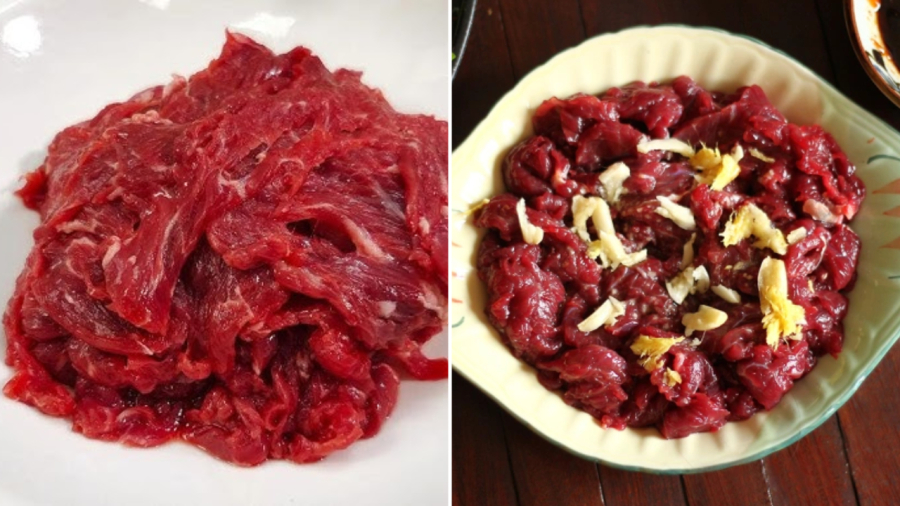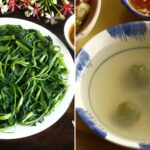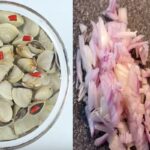Fish sauce is an essential condiment in Vietnamese cuisine, adding flavor to a myriad of dishes. However, a little-known cooking tip is to avoid using fish sauce as a marinade for beef.
Why You Shouldn’t Marinate Beef with Fish Sauce
In many recipes, it is common to marinate ingredients, especially meat, before cooking to enhance flavor and tenderness. However, when it comes to beef, fish sauce should be avoided as a marinade. The presence of fish sauce will result in tougher and chewier meat, while also diminishing its natural sweetness.
Additionally, the distinctive aroma of fish sauce, particularly those with higher concentrations, can be overpowering. Marinating beef in fish sauce for an extended period may result in an unpleasantly strong odor, detracting from the dish’s overall appeal.
During the cooking process, the aroma of fish sauce intensifies. In some cases, prolonged cooking with fish sauce may alter its flavor, imparting an undesirable sour taste to the dish.
A fundamental principle in culinary science is “salt separates, sugar retains.” Salt tends to draw out moisture from meat, resulting in tougher and drier texture. On the other hand, sugar helps retain moisture.
Depending on the dish, various alternatives can be used to marinate beef. For instance, when stir-frying beef, a combination of ginger, garlic, soy sauce, oyster sauce, cornstarch, and cooking oil will impart tenderness and moisture to the meat, while neutralizing any unwanted odors.
If you wish to incorporate fish sauce into beef dishes, it is advisable to add it towards the end of the cooking process, just before turning off the heat.
In cases where the beef is particularly tough or chewy, you can use alternative tenderizing agents such as pineapple, orange juice, or beer. However, it is important to exercise caution with pineapple due to its enzyme bromelain, which can break down protein. Over-marinating with pineapple can lead to a mushy, disintegrated texture in the meat.

Selecting Prime Beef
Choosing fresh and high-quality beef is essential for a delicious dish. The type of beef selected should align with the intended dish. Typically, beef from Australia, the United States, or Japan tends to be more tender due to farming practices and harvesting times. For local beef, opting for younger cattle, known as “bò tơ,” will result in more tender meat.
When purchasing beef, look for bright red meat with a fresh aroma, free from any pungent or strange odors. The meat should be resilient and spring back when pressed.
Meat Cutting Techniques
The cutting technique may vary depending on the dish. For stir-fried beef, it is advisable to slice the meat thinly and across the grain to ensure tenderness. In contrast, dishes like steak are typically served as larger cuts. For beef stew or stir-fry, the meat should be cut into larger cubes or strips, respectively.
Cooking Beef: Some Important Notes
Stir-frying beef requires high heat and quick cooking to seal in moisture and prevent toughness. Cooking beef over low heat for an extended period will result in dry and chewy meat.
For beef stew or braised dishes, slow cooking at a low temperature will tenderize the meat. A pressure cooker can also be employed to expedite the process.
When boiling beef, as in the case of boiled shank, adding aromatics like ginger and onion helps neutralize any unwanted odors. After boiling, it is recommended to plunge the meat into ice-cold water to tighten the fibers, making it easier to slice.
The Ultimate Guide to Tenderized Pork Ribs: A Restaurant-Worthy Dish at Home
With this mouth-watering spare rib recipe, you’ll be transported to a flavor sensation. These juicy ribs are slow-cooked to perfection, resulting in fall-off-the-bone meat that melts in your mouth. The tangy tamarind sauce takes this dish to the next level, adding a unique and irresistible twist. It’s a dish that’s sure to impress and satisfy your taste buds.






































